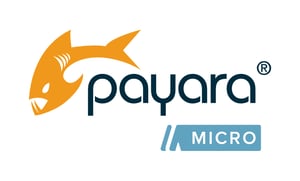Business Benefits of Using Kubernetes with Payara Micro
Originally published on 09 Jul 2019
Last updated on 09 Jul 2019
 by Debbie Hoffman
by Debbie Hoffman
The term “Kubernetes” comes from the Greek “kubernan,” which means to steer or guide. You can think of Kubernetes like a pilot for apps that are stored and run together in containers and other forms of workload distribution software. The Greek “kubernan” was transformed over the years to relate to the term “Govern”, which is another helpful comparison when trying to understand the full capacity of Kubernetes.
Kubernetes can take applications stored in containers and manage their usage to ensure that each app in the container is properly and efficiently utilized. Properly managing technology, including the use of containers, can reduce expenses for your company through manpower and increased efficiency. Using Kubernetes with Payara Micro offers additional capabilities and the benefits of improved application scalability.
Learn more: What is Kubernetes and How Does it Relate to Docker?
Understanding the Need for Kubernetes
When applications first became popular amongst businesses, each application was deployed on its own, physical server, which was incredibly inefficient. Later, virtualized deployment strategies allowed multiple apps to run on one server, but it was inefficient because certain items had to be duplicated, such as the Operating System.
Containers attempt to solve that issue, making it possible to move apps across clouds and different types of operating systems, making it far easier and more efficient to run a wide variety of apps all at once. Containers make code transportable, but larger apps tend to have pieces of code across several containers. For example, your database may live in one container, the caching server in another, and the web front end code in yet another container. The more applications your company has, the more containers you’ll need and the less likely it is your team can monitor and manage them efficiently. Kubernetes automates the management of containers and offers scaling advantages through the ability to spin up another instance with a simple command without needing to indicate where it needs to run.
Kubernetes: Managing, Balancing, and Deploying Containers to Increase Profit
The problem with containers is that they cannot think for themselves. They are a lot like actual, physical storage containers: they do the job they’re required to do (storing stuff), but they can’t fix themselves, put themselves where they need to be, or make sure they work together. In this analogy, Kubernetes are the cranes on the dock, the container ship, the trucks, and the crew all at once.
These helpful container management tools are multifaceted:
- If a container has too much traffic, Kubernetes can balance the workload amongst the apps to maintain speed and efficiency.
- Kubernetes allows you to choose where you want the apps stored automatically, making it easier to run any app on any cloud service – public, private, or a combination of public and private clouds to avoid vendor lock-in.
- Kubernetes self-regulates the container to reach the desired levels of output if your apps are not running to your desired standard.
- Kubernetes will make sure all of your containers have the amount of CPU and RAM that you specify - reducing infrastructure costs through using the minimum amount of resources. Applications that need to expand can be placed across pods where they have room to grow.
- Kubernetes repairs or gets rid of a container that fails or isn’t operating properly, replacing it with a proper functioning alternate.
Kubernetes with Payara Micro Increases App Production and Efficiency
As a container management tool, Kubernetes allow you to increase app production and efficiency while decreasing the need for manual repair and operation. If your business relies on application operation services at all, you’ll benefit from Kubernetes through multi-cloud flexibility, decreased infrastructure costs, and improved IT and development team efficiency. And, you can do so even more effectively by understanding the best ways to use it.
Payara Micro has support for Kubernetes built-in, expanding the capabilities and benefits of Kubernetes when you run your application on Payara Micro. For example, clustering is supported right out of the box. The Data Grid instance within Payara Micro will automatically discover other running instances and join them, making data placed into the instance immediately available for the other instances. This is great when multiple applications are running as it allows them to share information and even exchange information between different applications running on the same Kubernetes Cluster. As a result, using Kubernetes with Payara Micro makes scaling your application very easy.
Learn More: Scaling Payara Micro Applications with Kubernetes
Download Payara Micro and give it a try today:
What is Payara Micro?
 Payara Micro is the open source, lightweight middleware platform of choice for containerized Java EE (Jakarta EE) microservices deployments. Less than 70MB in size, Payara Micro requires no installation or configuration and no need for code rewrites – so you can build and deploy a fully working app within minutes.
Payara Micro is the open source, lightweight middleware platform of choice for containerized Java EE (Jakarta EE) microservices deployments. Less than 70MB in size, Payara Micro requires no installation or configuration and no need for code rewrites – so you can build and deploy a fully working app within minutes.
Compatible with Eclipse MicroProfile, Payara Micro is the microservices-ready version of Payara Server. You can run war files from the command line without any application server installation. Automatic and elastic clustering makes Payara Micro ideal for running Java EE applications in a modern virtualized infrastructure.
Payara Micro also comes with a Java API to embed and launch from your own Java applications.
Related Posts
What's New In The Payara Platform September 2025 Release?
Published on 03 Sep 2025
by Luqman Saeed
0 Comments
The Payara Monthly Catch - August 2025
Published on 02 Sep 2025
by Dominika Tasarz
0 Comments



